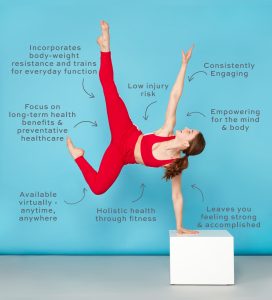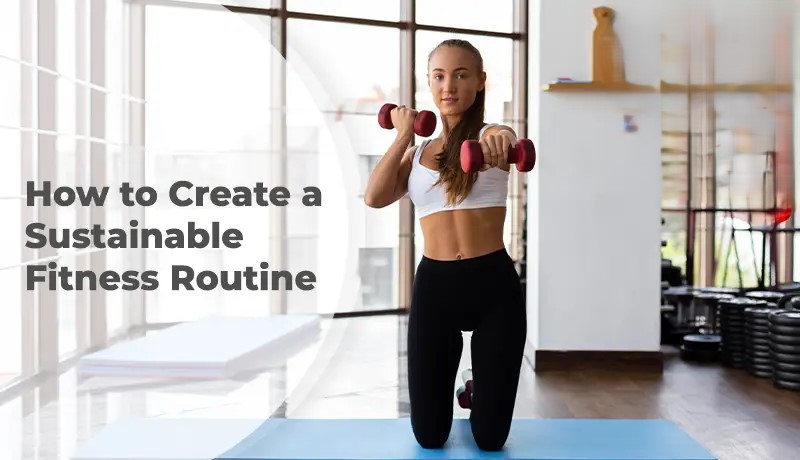Introduction
Creating a fitness routine that lasts is not just a quick fix it’s a path to a healthier life. Many people find it hard to stick to a fitness routine in today’s busy world. With so many trends and quick solutions, it can be tough to know what really works for the long haul. In this article, we will share expert tips and a step-by-step guide to help you create a workout plan that is easy to stick to. Whether you are new to exercising or want to change your current routine, these insights will help you build a program that lasts. Let’s get started on making a routine that supports your physical and mental health!
What is a Sustainable Fitness Routine?

A sustainable fitness routine is one you can follow consistently over time. It’s not about extreme workouts every day, but about finding a balance that fits your life. This routine includes regular exercise, enough rest, and focuses on gradual improvement. Instead of doing intense workouts for a short time and then stopping, a sustainable routine encourages steady progress. It’s flexible and can change as your fitness level improves or as your schedule changes.
What is Lasting Health?
Lasting health means creating habits that improve your overall well-being and help you stay fit in the long run. It’s not just about weight or a short burst of energy. Lasting health means feeling strong and balanced every day. It includes eating well, exercising regularly, and allowing time for recovery. When you build a healthy lifestyle, you create a foundation for lasting health that supports your physical and mental goals.
Key Components of a Sustainable Fitness Routine

1. Balanced Workout Plan
A balanced workout plan is crucial for a sustainable routine. It should include a mix of cardio (like running or biking), strength training (like lifting weights), flexibility (like stretching), and balance exercises. Cardio helps your heart, strength training builds muscle, and flexibility exercises reduce injury risk. By mixing these elements, you create a fun and complete workout routine. This balance helps prevent burnout and injury.
2. Nutrition and Recovery
A good fitness routine also needs proper nutrition and recovery. Eating the right foods gives you energy and helps your muscles recover. Focus on whole foods, like lean proteins, fruits, vegetables, and whole grains. Recovery is equally important; your body needs time to heal and strengthen after workouts. Take rest days and try gentle activities like stretching or yoga to maintain your fitness.
3. Consistency and Motivation
Being consistent is key to a sustainable fitness routine. It’s better to exercise regularly at a moderate level than to push too hard now and then. Staying motivated can be tough, but setting realistic goals and tracking your progress helps. Celebrate small victories and be patient. Over time, your consistent efforts will lead to improvements in your strength, endurance, and overall well-being.
Creating Your Own Sustainable Fitness Routine

Step-by-Step Guide
To create a routine that works for you, follow these steps:
1. Assess Your Current Fitness Level
Know where you stand. Identify your strengths and weaknesses to tailor your routine to your needs.
2. Set Clear, Achievable Goals
Define what you want to achieve, like building muscle or staying active. Make sure your goals are realistic.
3. Plan a Balanced Workout Schedule
Create a weekly plan that includes cardio, strength training, and flexibility exercises. For example, three days of cardio, two days of strength, and one or two days of yoga.
4. Incorporate Rest and Recovery
Include rest days to let your muscles recover. Active recovery days with light exercise, like walking, are also beneficial.
5. Track Your Progress
Keep a journal or use an app to record your workouts and monitor improvements. Tracking helps keep you motivated.
Setting Realistic Goals
Setting realistic goals is essential. Aim for small, achievable targets instead of drastic changes. For example, start with a goal of exercising for 30 minutes, three times a week, and gradually increase over time. This way, you avoid burnout and injuries.
Tracking Progress
Regularly checking your progress helps you see improvements and adjust your routine. Use a fitness tracker or a workout log to document your efforts. This record provides valuable insights and keeps you on track.
Common Challenges and How to Overcome Them

1. Staying Consistent
One challenge is staying consistent. Life can get busy, making it easy to skip workouts. To combat this, schedule your workouts as you would any important meeting.
2. Avoiding Burnout
Burnout can happen when starting a new fitness plan. Listen to your body and include variety in your workouts. Remember, sustainable fitness is about long-term progress.
3. Adjusting Your Routine Over Time
As you get fitter, adjust your routine to keep challenging yourself. Regularly review your goals and modify your exercises to prevent plateaus.
Expert Tips for a Sustainable Fitness Routine

1. Expert Advice on Exercise
Experts suggest that balance and variety are key to a sustainable fitness routine. Enjoying your workouts is important so that it doesn’t feel like a chore. Mix different exercises and listen to your body.
2. Incorporating Flexibility and Recovery
Flexibility exercises, like stretching or yoga, are crucial for preventing injuries. These practices improve your range of motion and help with recovery.
3. Practical Fitness Tips
Here are some simple tips to help you succeed:
- Start slow and gradually increase workout intensity.
- Stay hydrated and eat nutritious foods.
- Find a workout buddy to keep you motivated.
- Mix up your routine to avoid boredom.
- Track your progress to see improvements.
The Importance of Starting Small
When creating a sustainable fitness routine, it’s essential to start small. Many people feel overwhelmed by the idea of committing to a big workout plan. Instead of jumping into an intense program, focus on making small changes. For example, aim to walk for 10 minutes a day or do a few stretches in the morning. These little steps can build your confidence and help you develop a habit of regular exercise. Over time, you can gradually increase the duration and intensity of your workouts.
Finding Activities You Enjoy
One of the keys to a sustainable fitness routine is choosing activities you enjoy. If you hate running, don’t force yourself to do it just because it’s popular. Instead, try different exercises like dancing, swimming, or biking. Explore group classes or outdoor activities that make you excited to move. When you enjoy what you’re doing, you’re more likely to stick with it and make it a regular part of your life.
Building a Support System

Having a support system can make a big difference in your fitness journey. Surround yourself with friends or family who encourage you to stay active. Join a local fitness group or online community where you can share your goals and experiences. This support can help keep you motivated, especially on days when you might not feel like exercising. Working out with others can also make exercise more enjoyable and fun.
Challenges of Implementing Sustainable Fitness
While there are many benefits to sustainable fitness, there are also challenges. One common challenge is finding the time to exercise regularly amid busy schedules. Many people struggle to prioritize fitness when they have work, family, and other responsibilities. Another challenge is staying motivated over time. It can be easy to lose interest in a routine or become discouraged by slow progress. Additionally, some individuals may face barriers such as lack of access to fitness facilities or resources.
The Future of Sustainable Fitness

The future of sustainable fitness looks promising as more people recognize its importance. With the rise of technology, we can expect more apps and online programs that support sustainable fitness routines. These tools can provide guidance, tracking, and motivation for individuals. As awareness of health issues continues to grow, we may also see more community programs and initiatives focused on promoting sustainable fitness. By embracing these changes, we can create a healthier and more active society for everyone.
Comparison Table: Different Fitness Routines
To choose the best workout plan for you, compare different routines. Here’s a simple table to help you:
| Routine Type | Description | Benefits | Sustainability Score | Notes |
|---|---|---|---|---|
| Cardio-Based | Focuses on cardiovascular exercises | Improves heart health, burns calories | 8/10 | Best with strength training |
| Strength-Based | Emphasizes resistance training and weightlifting | Builds muscle, boosts metabolism | 7/10 | Ensure proper form to prevent injuries |
| Flexibility | Focuses on stretching, yoga, and balance | Enhances mobility, reduces injury risk | 9/10 | Great complement to other routines |
| Mixed Routine | Combines cardio, strength, and flexibility | Balanced fitness benefits | 10/10 | Highly adaptable and engaging |
| Low-Impact | Gentle exercises like walking and swimming | Good for beginners, joint-friendly | 9/10 | Excellent for recovery |
This table shows that there isn’t a one-size-fits-all solution. Choose a routine that fits your goals and lifestyle. A balanced plan with different types of exercise is often the most sustainable.
Conclusion
In summary, building a sustainable fitness routine means creating a balanced, enjoyable, and adaptable plan for lasting health. By including a mix of workouts, focusing on nutrition and recovery, and following expert tips, you can develop a routine that fits your life. Set realistic goals, track your progress, and adjust as needed. With dedication and the right approach, your fitness journey can become a lasting source of strength and well-being.
Call to Action
Are you ready to change your fitness journey? Start building your sustainable fitness routine today using these expert tips. Visit our website for more advice, personalized plans, and resources to help you achieve lasting health. Embrace a healthy lifestyle and take the first step toward a fitter, happier you now!




